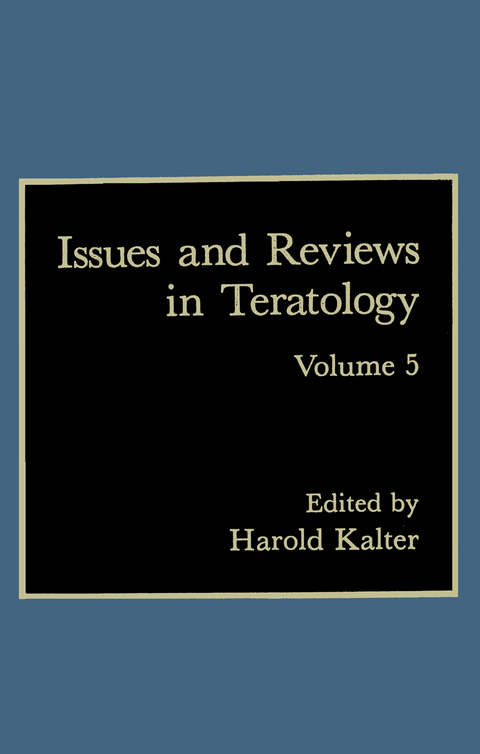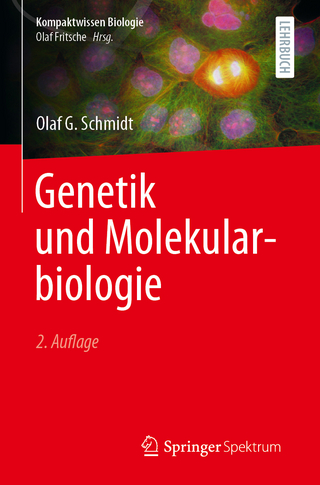
Issues and Reviews in Teratology
Springer-Verlag New York Inc.
978-1-4612-7847-4 (ISBN)
1 Of Mice and Children: Reminiscences of a Teratogeneticist.- 1. Prenatal and Family History.- 2. Childhood.- 3. The Nuclear Family.- 4. School.- 5. University.- 6. Graduate School.- 7. Graduate Studies.- 8. Royal Canadian Air Force.- 9. Medical School.- 10. Getting Started—Medical Genetics.- 11. Medical Genetics Comes of Age.- 12. Genetic Counseling.- 13. The Teratology Connection.- 14. Cleft Palate and Cortisone.- 15. The Multifactorial/Threshold Model.- 16. The Human Connection.- 17. 6-Aminonicotinamide.- 18. Spin-offs.- 19. Cleft Lip.- 20. Studies in Medical Genetics.- 21. The Terato-Clinical Genetics Dilemma.- 22. The Books.- 23. Travels.- 24. International Conferences on Congenital Malformations.- 25. World Health Organization Committee.- 26. Thalidomide.- 27. Saccharin a Teratogen?.- 28. The Anomalad.- 29. Agent Orange.- 30. Sickle-Cell Screening.- 31. Newfoundland.- 32. Personal History.- References.- 2 The Concept of Homology in Comparative Mammalian Teratology.- 1. Introduction.- 2. Homology.- 3. Concept of Phenotype.- 4. Some Issues in Comparative Pathogenesis.- 5. Homologous Common Congenital Malformations.- 6. Searching for Homologous Congenital Defects.- 7. Do Names and Definitions Matter?.- 8. Some Concluding Thoughts.- References.- 3 Short-Term Methods of Assessing Developmental Toxicity Hazard: Status and Critical Evaluation.- 1. Introduction.- 2. The Drive to Develop New Methods of Detecting Developmental Hazard Potential.- 3. Goals of in Vitro and Alternative Methods in Developmental Toxicology.- 4. Testing Chemicals of Unknown Embryotoxic Activity.- 5. In Vitro Systems Explored for Prescreening Purposes.- 6. Most Frequently Published in Vitro Prescreening Systems.- 7. Assessment of Proposed in Vitro Tests.- 8. Comments on Validation.- 9. Outlookfor the Future: Genetic Toxicology versus Developmental Toxicology. Can One Glean Anything from Genetic Toxicology?.- References.- 4 Twinning in Spontaneous Abortions and Developmental Abnormalities.- 1. Introduction.- 2. Types of Twins.- 3. Spontaneous Abortions.- 4. Developmental Abnormalities.- 5. The Vanishing Twin.- 6. Incidence of Twinning.- References.- 5 Experimental Induction of Dominant Mutations in Mammals by Ionizing Radiations and Chemicals.- 1. Introduction.- 2. Gametogenesis.- 3. Review of Results Obtained for Different Endpoints.- 4. Genetic Risk Estimation.- 5. Special Considerations for Future Study of Induction of Dominant Mutations.- References.- 6 The Teratology and Developmental Toxicity of Cadmium.- 1. Introduction.- 2. Cadmium as a Teratogen.- 3. Cadmium and the Chorioallantoic Placenta.- 4. Chronic Exposure to Cadmium during Pregnancy.- 5. Cadmium Exposure in the Perinatal Period.- 6. Summary.- References.- 7 Epidemiologic Aspects of Down Syndrome: Sex Ratio, Incidence, and Recent Impact of Prenatal Diagnosis.- 1. Introduction.- 2. Sex Ratio in Down Syndrome.- 3. Incidence of Down Syndrome and Effects of Demographic Changes.- 4. Effects of Prenatal Diagnosis on Incidence Rates of Down Syndrome.- 5. Concluding Remarks.- References.
| Erscheint lt. Verlag | 26.9.2011 |
|---|---|
| Zusatzinfo | 338 p. |
| Verlagsort | New York, NY |
| Sprache | englisch |
| Maße | 152 x 229 mm |
| Themenwelt | Medizin / Pharmazie ► Medizinische Fachgebiete ► Gynäkologie / Geburtshilfe |
| Studium ► 2. Studienabschnitt (Klinik) ► Humangenetik | |
| Naturwissenschaften ► Biologie ► Genetik / Molekularbiologie | |
| ISBN-10 | 1-4612-7847-3 / 1461278473 |
| ISBN-13 | 978-1-4612-7847-4 / 9781461278474 |
| Zustand | Neuware |
| Haben Sie eine Frage zum Produkt? |
aus dem Bereich


